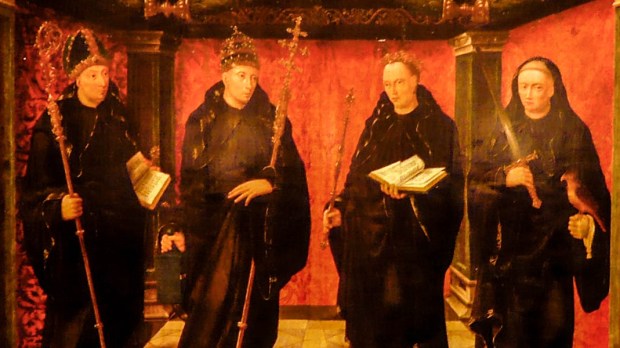A few centuries after Christian monasticism was born in Egypt, St. Benedict came along and made profound changes that would impact religious life for the rest of history.
Around the year 500 Benedict left his studies in Rome to lead the life of a hermit in a cave. His holiness attracted many people and they asked him to preside over their community of monks. After a few struggles, Benedict formulated a rule and founded a monastery that would later influence all other forms of monasticism in the West. For this reason St. Benedict became known as the “Father of Western Monasticism.”
Here is a brief guide to the order, detailing the basics of what makes this religious community unique.
Names & Abbreviations: Order of St. Benedict, Benedictines, Black Monks (because of the color of their habit, or religious clothing), OSB
Date of Foundation: c. 529
Founders: Sts. Benedict and Scholastica of Nursia (siblings)
Motto & Charism: Ora et Labora (pray and work)
Sister Joan L. Roccasalvo explains the general charism of the Benedictine Order in this way:
The monastic charism of the Benedictine Order bears witness to Jesus’s mandate to pray always. For those men and women who follow the Rule of St. Benedict, their primary mission is to live out this mandate. In addition to the traditional three vows, monastics take the vow of stability, that is, the vow to live all their lives in one particular monastery instead of moving about from one place to another. They chant in common the Liturgy of the Hours and listen to the lectio divina, the continuous reading of Sacred Scripture and patristic literature. Round the clock they pray: in the very early hours of the morning, during the day at appointed hours, and finally before retiring.
In addition to prayer, Benedictines devote themselves to work at their monastery. This could include, “education, writing and publishing books, farming, raising cattle, growing herb gardens, making wines, liqueurs, and jams, baking breads, making vestments and other handmade crafts, training dogs, offering hospitality to guests.”
One of the hallmarks of the Benedictine Order are the rules governing hospitality, which were laid out by St. Benedict. Each person is to be treated as if they were Jesus Christ.
Examples of Benedictine Communities: Some Benedictine communities are the Benedictines of Mary and the Benedictine monks at Norcia, the Benedictines of Clear Creek Abbey, the Abbey of St. Walburga, and the Abbey of Regina Laudis.
Famous Benedictines: Venerable Bede, St. Hildegard of Bingen, St. Scholastica, Pope St. Gregory the Great, and St. Gertrude the Great.
Lay Benedictines (known as oblates) include St. Francis of Rome, King St. Henry II, Servant of God Dorothy Day, and writers Rumer Godden, Flannery O’ Connor, and Walker Percy.

Read more:
Most religious orders can trace their spiritual lineage to Egypt

Read more:
Why do monks and nuns wear different colors?

